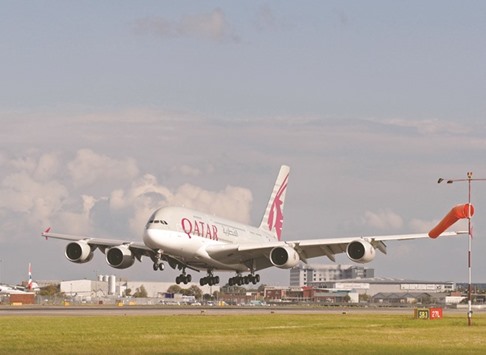Middle East carriers have recorded the “strongest regional annual traffic growth” for the fifth year in a row in 2016, data released by the International Air Transport Association (IATA) show.
They have helped the region consolidate its position as the third-largest market for international passengers, IATA said. The Middle Eastern air transport growth is driven by the three large GCC carriers – Qatar Airways, Emirates and Etihad.
Revenue passenger kilometres (RPKs) that measures actual passenger traffic expanded 11.8%, while capacity grew (13.7%) and outstripped demand, with the result that the load factor fell 1.3 percentage points to 74.7%, IATA said.
IATA’s full-year global passenger traffic results for 2016 showed demand (RPKs) rose 6.3% compared to 2015 (or 6% if adjusted for the leap year).
This strong performance, IATA said, was “well ahead” of the ten-year average annual growth rate of 5.5%. Capacity rose 6.2% (unadjusted) compared to 2015, pushing the load factor up 0.1 percentage points to a record full-year average high of 80.5%.
A “particularly strong performance” was reported for December with an 8.8% rise in demand outstripping 6.6% capacity growth.
Alexandre de Juniac, IATA’s director general and CEO said, “Air travel was a good news story in 2016. Connectivity increased with the establishment of more than 700 new routes. And a $44 fall in average return fares helped to make air travel even more accessible. As a result, a record 3.7bn passengers flew safely to their destination. Demand for air travel is still expanding. The challenge for governments is to work with the industry to meet that demand with infrastructure that can accommodate the growth, regulation that facilitates growth and taxes that don’t choke growth. If we can achieve that, there is plenty of potential for a safe, secure and sustainable aviation industry to create more jobs and increase prosperity.”
In terms of domestic passenger markets, IATA said domestic air travel rose 5.7% in 2016. Capacity rose 5.1% and load factor was 82.2%, up 0.5 percentage points over 2015.
All major markets except Brazil showed growth, but India and China, with RPK expansion of 23.3% and 11.7% respectively, were the “stand-out” performers.
“These markets have been underpinned by additional routes and increasing flight frequencies, with the latter looking set to continue in 2017,” IATA said.
De Juniac said, “Our freedom to connect through air travel drives prosperity and enriches societies. That freedom can only be given its fullest expression when governments facilitate the movement of people and goods. Security and competitiveness, of course, must always be top of mind for governments.”

The Middle Eastern air transport growth is driven by the three large GCC carriers including Qatar Airways


